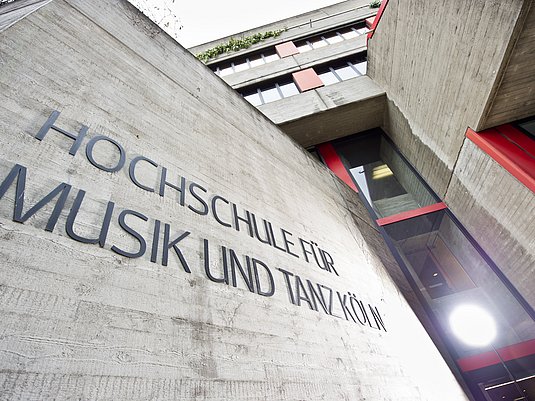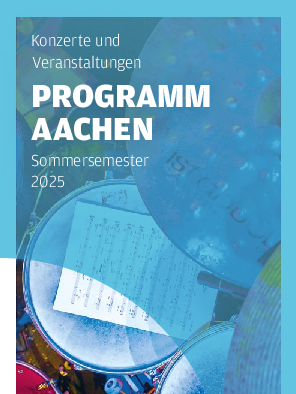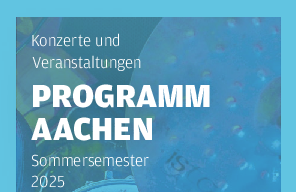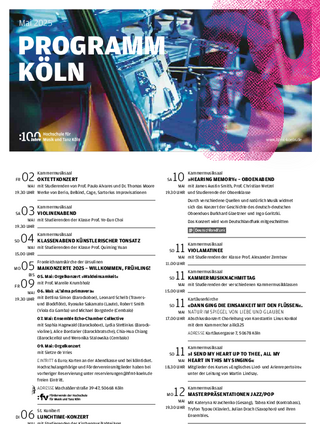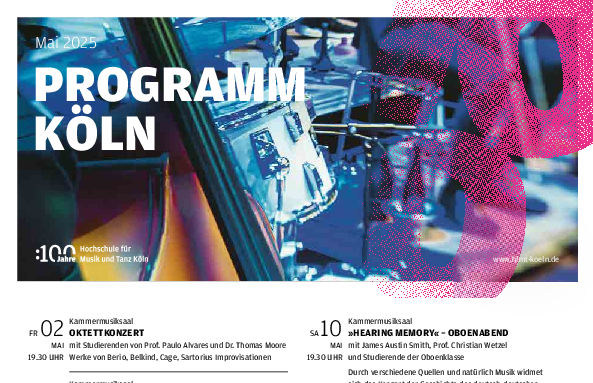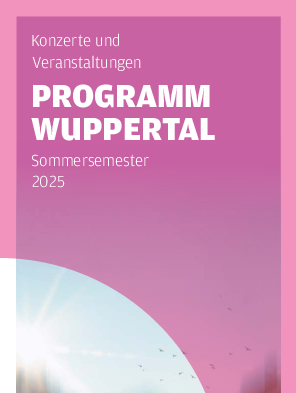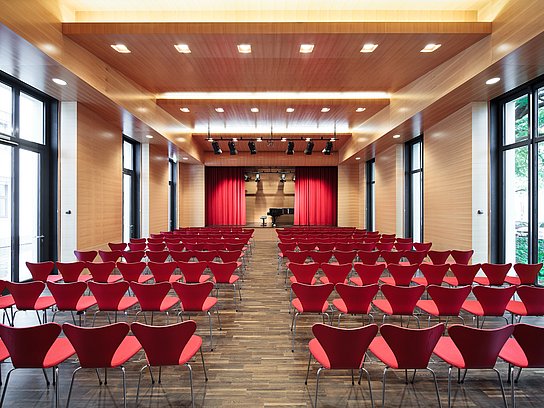Aachen
Study with triad
Aken, Aix-Chapelle, Aachen. In the western tip of Germany, you hear a lot in the triad. Because in the city in the border triangle German, Dutch and Belgian culture combine. The Maasland, the Rhineland and the Eifel. Aachen Cathedral, the Couven Museum and the Elisenbrunnen. Aachen Printen, Belgian rice cakes and Dutch frites. Everywhere in the city, three cultures resound and compose a colorful European coexistence. If you listen carefully, you will also hear an old Germanic "ahha" or a Latin "Aquea Granni" here and there. They tell of ancient history of the Frankish Empire and the Romans, of flints, hot thermal springs and the palace of Charlemagne.
In the center of Aachen, in the immediate vicinity of the Aachen Theater, another triad takes place every day. That of students rehearsing at the university in the morning, sunbathing on the meadows by the Elisenbrunnen at noon, and bringing stories to life on stages with music and dance in the evening.
Site directorate
You can reach all members of the site management at the following e-mail address: Direktorium_Aachen@hfmt-koeln.de
- Prof. Timo Handschuh (Site Director)
- Prof. Andreas Frölich
- Prof. Skerdjano Keraj
Opening hours at the Aachen site
02.01.25 - 14.02.2026
02.01.2025 until 16.02.2025
- Monday - Friday: 08:00 to 22:00 (lessons / practice time until 21:30)
- Saturday - Sunday: 09:00 to 22:00 (lessons / practice time until 21:30)
17.02.25 until 31.04.2025
- Monday - Sunday: 09:00 to 19:30 (lessons / practice time until 19:00)
01.04.25 to 19.07.2025
- Monday - Friday: 08:00 to 22:00 (lessons / practice time until 21:30)
- Saturday - Sunday: 09:00 am to 10:00 pm (lessons / practice time until 9:30 pm)
20.07.25 to 30.09.2025
- Monday - Friday: 09:00 to 19:30 (practice time / lesson time until 19:00)
01.08.25 to 01.09.2025
- Saturday - Sunday: University closed
01.09.25 to 23.12.2025
- Monday - Friday: 08:00 to 22:00 (lessons / practice time until 21:30)
- Saturday - Sunday: 09:00 to 22:00 (lessons / practice time until 21:30)
24.12.2024 until 01.01.2026
- University closed
02.01.2026 until 14.02.2026
- Monday - Friday: 08:00 am to 10:00 pm (lessons / practice time until 9:30 pm)
- Sunday - Sunday: 09:00 am to 10:00 pm (lessons / practice time until 9:30 pm)
Closed
- Day of German Unity | 03.10.2024
- All Saints' Day | 01.11.2024
- Christmas break | 24.12.2024 to 01.01.2025
- Weiberfastnacht | 27.02.2025
- Rose Monday | 03.03.2025
- Easter | 18.04.2025 to 21.04.2025
- Labor Day | 01.05.2025
- Ascension Day | 29.05.2025
- Whit Sunday | 08.06.2025
- Whit Monday | 09.06.2025
- Corpus Christi | 19.06.2025
- Day of German Unity | 03.10.2025
- All Saints' Day | 01.11.2025
- Christmas break | 24.12.2025 to 01.01.2026
Events
Konzertsaal Aachen

Konzertsaal Aachen

Konzertsaal Aachen

Konzertsaal Aachen

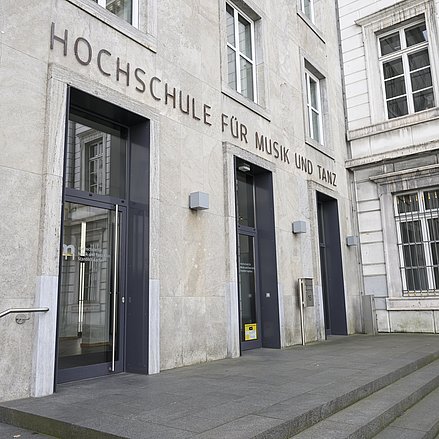
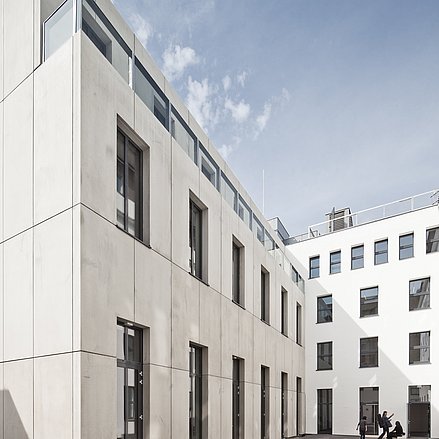
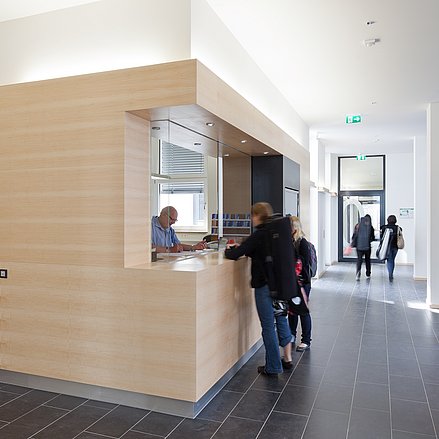
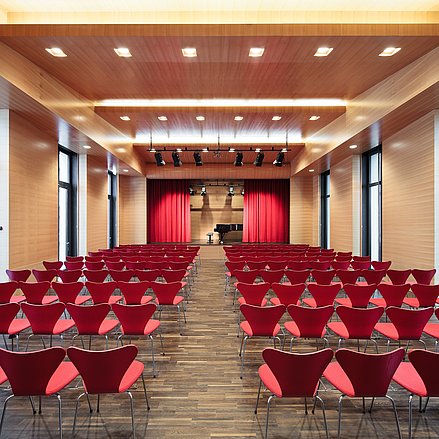
In the middle of the sound game of the city.
A wide variety of sounds can be heard every day, not only in the university but also around it. Because when you walk out the door, you walk right into the hustle and bustle of the city center. The clacking of dishes in the countless cafés, the buzzing on the shopping streets and the ringing of the Aachen cathedral bells. All around you can also hear a lot of like-minded people, for example in the Domsingschule or the Gesellschaft für Neue Musik (Society for New Music), singing their own tunes.
Those who need peace and quiet from this polyphonic hustle and bustle will find it in the relaxed inner courtyard of the university, to work in the large library or on the meadows by the Elisenbrunnen in a spot of sunshine.
The locations of the university together offer
Venues
- Three concert halls, two chamber music halls
- One studio theater
- External venues: Urania Theater, Corpus Christi Church of the Ursulines
Technical facilities
- One lighting control room, two sound studios
Classrooms and overrooms
- Six organ rooms, about 90 overrooms, about 170 classrooms, five dance classrooms
Instruments
- 95 upright pianos, 241 grand pianos, instrument loans
Four libraries
Allemannsfrönd.
A chant of cultures
Anyone who moves to Aachen for the first time is taken aback by one or two of the words they hear here. Many report a peculiar linguistic melody, a singsong of strange words like "Öcher" and "Dubbele merssi." As unique as the whole city is, so is its language: a mixture of cultures that have influenced each other over the centuries. Whether different countries, eating habits or architecture - they are all welcome here. Aachen is, after all, Allemannsfrönd.
How conveniently Aachen is located exactly at the junction between three countries was already noticed by the ancient Romans and later by Charlemagne, who declared Aachen his favorite place of residence. We owe the city hall and the magnificent Aachen Cathedral to him. But to this day, Aachen's many small streets and large squares, house facades and street stalls unite Belgian, Dutch and German culture. Studying, working, living and shopping in three different countries, in short, living in the middle of Europe.
We bring talent to the stage
Focal points at the Aachen site
Even the university's address in Aachen is an ode to our most important neighbor: Am Theaterplatz. The stage air blows in through the window every day, because the Theater Aachen is right across the street from us. We have been playing, making music and staging together for over 20 years.
Every season, the university takes over the last opera premiere of the season with four performances at the theater. At the Rhenish Opera Academy, singers can draw from a wide range of courses: from scenic lessons to aria presentation, stage fencing and bodywork to elocution lessons.
But it is also impossible to imagine the concert landscape around Aachen, the symphony orchestra and Aachen Cathedral without our students. Whether as a singer on the opera stage or as a flutist in the orchestra pit - performance experience is our top priority.
Live and study.
The city is bustling with life with more than 40,000 students at four universities. In concrete terms, this means that around one in five Aachen residents is a student. The city is well prepared for this number with student dormitories, a wide range of university sports, libraries and counseling centers.
In the evening, many students walk from the university past the Elisenbrunnen fountain across the market square toward the Ponttor. In the Middle Ages, kings strode past the ornate buildings on their way to their coronation. Today, pubs, cafés and restaurants have moved in there and form Aachen's trendy district - as befits any major university city.
Important contact points for students:
Dance, music and culture in Aachen.
"In the middle of Europe" is also the motto of Aachen's cultural scene. Whether in museums, at festivals, concerts or theater performances - art works across borders. In addition to long-standing traditions such as the Aachen Cathedral Choir, the city also offers plenty of room for new things.
Music
Ancient and highly alive. Aachen's musical tradition looks back on a long history that is still kept alive and constantly developed today.
The Aachen Cathedral Choir is the oldest boys' choir in Germany with its more than 1200-year history. Its foundation goes back to the Aachen court school "Schola Palatina", which Emperor Charlemagne founded with the scholar Alcuin of York.
The Aachen Symphony Orchestra is also one of the oldest orchestras in Germany. In earlier times, the conductors Leo Blech, Fritz Busch, Wolfgang Sawallisch and, last but not least, Herbert von Karajan worked here.
Aachen's choral scene, impressively represented by the Aachen Chorbiennale, is more diverse than almost anywhere else: Aachen Cathedral Choir, "Ars Cantandi", "Carmina Mundi" (several times first prize winner in the German Choir Competition), "Cappella Aquensis" as well as the "Junge Chor Aachen" are excellent. Wilhelm Pitz, the legendary choirmaster of the Bayreuth Festival and the London Philharmonia Chorus, already conducted the Municipal Choir here.
The International Piano Competition and Festival Aachen "MozARTe" has been organized and held since 2004 by MozArte e. V. in cooperation with the Aachen University of Music, the Lions Club Aachen Urbs Regalis, the F. Victor Rolff Foundation, the Brigitte Hennemann Foundation and the Cultural Department of the City of Aachen, as well as numerous sponsors, friends and supporters.
Dance & Theater
In addition to our most important cooperation partner, Theater Aachen, the city has plenty of diverse stages to offer for dance, drama and opera. Theater Aachen presents drama and opera performances on two stages. The last opera premiere of the season is always delivered by the university itself.
The Grenzlandtheater Aachen was founded in 1950 by actor Kurt Sieder as a private theater and presents everything from modern classics to contemporary dramas and musicals.
Theater K plays on the grounds of the historic TUCHWERK Aachen with varied programs in the spacious industrial rooms. In addition to drama productions, concerts, readings and dance performances take place.
The non-profit Da Theater offers in-house productions, theater education, concerts, cabaret and children's programs.
The Stadtpuppenbühne Oecher Schängche is a traditional rod puppet theater founded in 1921 by local poet Will Hermanns.
The Schrittmacher Festival for Contemporary Dance has been organized internationally every year since 1993.
Art
From church treasures, city history and Old Masters to modern art - Aachen has a rich museum landscape. All city museums offer free admission to people under 21.
In the Ludwig Forum, Peter Ludwig, one of the most important collectors of the 20th century, presented Pop Art artists Robert Rauschenberg, Roy Lichtenstein and Andy Warhol for the first time.
The Neue Aachener Kunstverein in Farwick Park is virtually synonymous with innovative exhibitions.
The Suermondt-Ludwig-Museum presents art from the Old Masters to the present day.
The Couven Museum in "Haus Monheim" Wohnkultur shows art from the Rococo to the Biedermeier.
